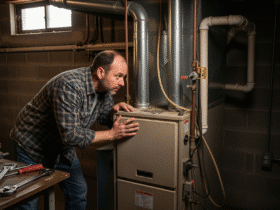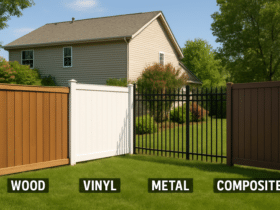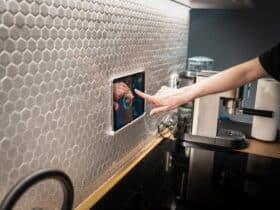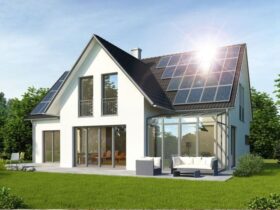Key Takeaways
- Learn about innovative plumbing technologies.
- Discover how smart plumbing can save water and reduce costs.
- Understand the benefits of incorporating smart devices into your home’s plumbing system.
Table of Contents
- Introduction to Smart Plumbing
- Benefits of Smart Plumbing for Homeowners
- Popular Smart Plumbing Technologies
- Integrating Smart Devices into Existing Plumbing
- Water Conservation and Environmental Impact
- Potential Challenges and How to Overcome Them
- Expert Tips for Maintaining Smart Plumbing Systems
- Future Trends in Smart Plumbing Technologies
Introduction to Smart Plumbing
Smart plumbing uses advanced technology to improve home water system efficiency and functionality. It integrates devices that monitor usage and detect leaks, enhancing the water management ecosystem. This trend is part of the broader expansion of smart home technology, where interconnected devices collaborate to improve living standards and household management. Innovative technologies in home design are not just a luxury but a prudent step towards a sustainable future. With advanced plumbing services, homeowners can access innovative solutions seamlessly, blending convenience with efficiency. Smart plumbing technologies can lower water bills, reduce waste, and improve home functionality. They create a sustainable, efficient, and intelligent living environment. Traditional setups are transformed into interactive networks that communicate directly with homeowners, offering greater control, real-time monitoring, and peace of mind by minimizing risks like leaks and over-consumption. This investment is a wise investment for modern dwellings.
Benefits of Smart Plumbing for Homeowners
Innovative plumbing systems offer various advantages, such as enhanced convenience with technology-driven fixtures and peace of mind through automated monitoring and alerts. A skilled Plumbing Contractor can help implement these advanced solutions for optimal efficiency and reliability. With the help of these devices, homeowners can easily monitor their water consumption, which, over time, can result in significant energy and water bill savings. Furthermore, imaginative modalities such as in-depth analytics, usage alerts, and predictive maintenance reminders significantly reduce the risk of unexpected repairs, providing both short-term and long-term cost advantages.
Popular Smart Plumbing Technologies
Smart Faucets and Showerheads
These innovative fixtures allow homeowners to control water temperature and flow rate and monitor consumption directly through smartphones. The convenience extends to setting up predefined preferences. You can have the perfect shower experience every time or ensure faucets automatically turn off after a specified duration to conserve water.
Leak Detection Systems
Incorporating smart leak detectors revolutionizes home water systems by alerting homeowners in real time to potential issues, minimizing water damage and associated repair costs. Advanced models can automatically cut off the water supply when a leak is discovered, guaranteeing an instant response without human intervention.
Touchless Toilets
Echoing the need for hygiene and efficiency, modern touchless toilets use sensors for flushing, significantly reducing the need for user contact with germ-laden surfaces. These technologies also optimize water usage by allowing dual-flush options to be automatically adjusted based on need, meaningfully contributing to water conservation efforts.
Integrating Smart Devices into Existing Plumbing
Integrating smart plumbing devices into an existing setup requires substantial planning and foresight. Homeowners should assess their current plumbing systems to identify possible upgrades and areas needing improvement. It’s crucial to select compatible technologies, and in many cases, hiring professionals can ensure seamless integration, thereby avoiding incompatible setups that could result in inefficiencies or potential malfunctions.
Water Conservation and Environmental Impact
Innovative plumbing systems contribute significantly to water conservation efforts. These technologies align closely with environmental goals by employing intelligent systems that minimize waste and promote efficient water use. According to the Environmental Protection Agency, adopting smart plumbing devices could save thousands of gallons of water annually—even more when combined with conscious consumer practices. This conservation can significantly reduce individual water bills and communal resources, lessening the environmental burden.
Potential Challenges and How to Overcome Them
The journey toward implementing innovative technology isn’t without its hurdles. Fundamental challenges include high initial costs and compatibility issues with older and less flexible systems. Homeowners can navigate these challenges by prioritizing essential upgrades and selecting scalable solutions that permit future advancements and enhancements. Incremental adoption allows homeowners time to adjust and spread costs, making the transition less financially tumultuous.
Expert Tips for Maintaining Smart Plumbing Systems
Regular maintenance is essential for innovative plumbing systems to function well and last long. Homeowners should ensure all software is current, perform routine manual checks for leaks, and consult with plumbing professionals for thorough maintenance services. Keeping systems clean, responding promptly to alerts, and maintaining device integrity will ensure that intelligent systems operate efficiently over their intended lifespan.
Future Trends in Smart Plumbing Technologies
The future of smart plumbing looks promising, characterized by the emergence of AI-driven systems and enhanced integration with broader home automation. These advancements promise to heighten efficiency, offer more predictive maintenance capabilities, and promote a sustainable home water management approach. As AI technology develops, it may predict and autonomously resolve potential plumbing issues before they escalate, exemplifying the perpetually forward-facing nature of smart home technology integration.









